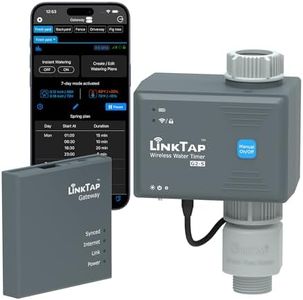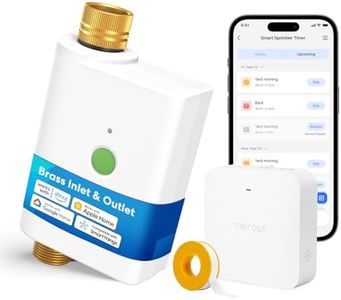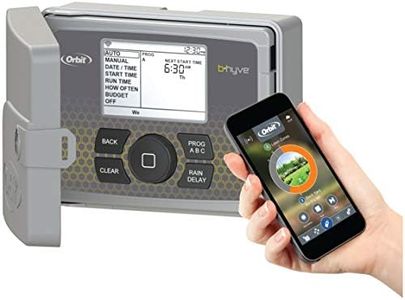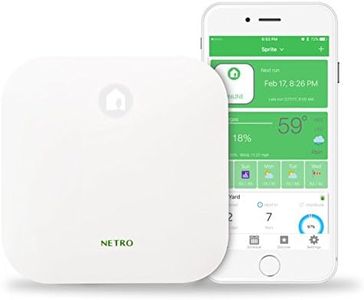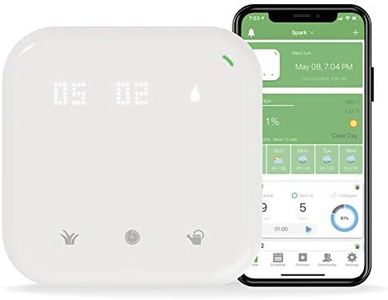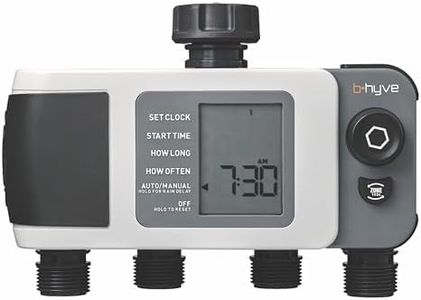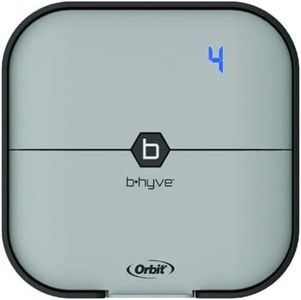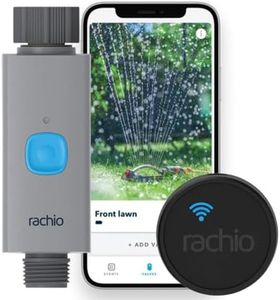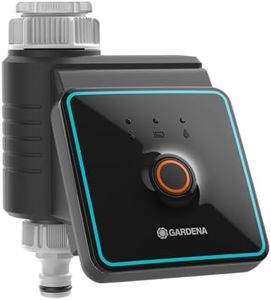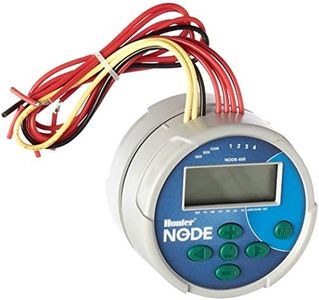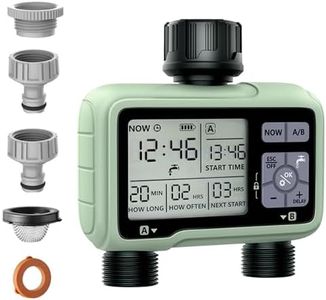We Use CookiesWe use cookies to enhance the security, performance,
functionality and for analytical and promotional activities. By continuing to browse this site you
are agreeing to our privacy policy
10 Best Sprinkler Controllers
From leading brands and best sellers available on the web.Buying Guide for the Best Sprinkler Controllers
Choosing the right sprinkler controller can make your lawn and garden watering easier, more efficient, and better suited to your lifestyle. When shopping for a sprinkler controller, start by thinking about your yard's layout, the climate you live in, and how much you want to interact with your watering system. Understanding the fundamental features will help you select a controller that keeps your plants healthy while saving water and cutting down on manual work.Number of ZonesThe number of zones refers to how many separate areas a sprinkler controller can manage independently. Each zone typically matches a part of your yard that needs different watering schedules, such as a flower bed versus a grassy lawn. Controllers usually offer from four to sixteen zones or more. If your yard is small and uniform, fewer zones may be enough. If you have a large or segmented yard, more zones will allow you to tailor watering for each section. To choose the right number, count the distinct areas of your landscape that need individually timed watering.
Connectivity (Wi-Fi vs. Manual)Connectivity is about how you control your sprinkler system. Wi-Fi-enabled controllers let you use your smartphone, tablet, or voice assistants, often with apps that provide weather updates and adjust schedules automatically. Manual controllers require you to set schedules directly on the device, with less flexibility but fewer technology requirements. Those who want convenience, customization, and remote control may prefer Wi-Fi models. If you prefer simplicity or have unreliable Wi-Fi, a manual version can be just right.
Weather Sensing and AdjustmentsThis feature allows the controller to adjust watering schedules based on the weather, such as pausing when it rains or increasing watering during hot spells. Some controllers get weather data from local forecasts via the internet, while others require separate sensors. If you want to save water and minimize over- or under-watering, look for this feature. It's particularly helpful in places with changing weather or water restrictions.
Programming FlexibilityProgramming flexibility means how much you can customize watering schedules. Cheaper controllers might have only one or two daily programs, while more advanced models let you create detailed, multiple schedules for each zone, down to specific days, times, and seasonal adjustments. If your yard has diverse plants or watering needs, more programming options will give you greater control. If you have a straightforward setup, basic scheduling may be all you need.
Installation Type (Indoor vs. Outdoor)Sprinkler controllers come in models designed for indoor installation (such as garages or sheds) and weather-resistant versions for outdoor mounting. Outdoor units are built to handle rain, sun, and dust. If you don't have a sheltered spot or want to reduce wiring hassle, choose an outdoor-ready controller. If you have a suitable indoor location with access to power and your sprinkler wiring, an indoor controller may be easier to install.
Expansion CapabilityExpansion capability refers to whether you can add more zones or features to your controller in the future. Some controllers are fixed, while others let you add expansion modules to cover more areas as your landscape grows. Consider a model with expansion options if you may add garden beds, turf, or other irrigation zones over time.
